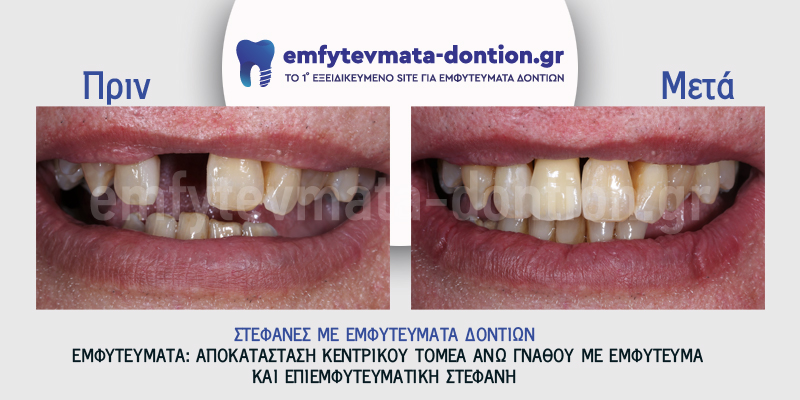Implants Bridges : What are They
Implant bridges are placed under certain conditions and always after an assessment by an experienced oral surgeon. It is a procedure that gives the patient a definitive and aesthetically beautiful result. It is a prosthetic restoration used to fill empty space in the mouth when one or more teeth are missing. The bridge is fully customized to the anatomical characteristics of each patient.

Implant bridges are divided into three categories, depending on the materials of construction: metal-ceramic, zirconia, and all-ceramic. The oral surgeon evaluates the patient’s overall dental picture and determines whether the use of a bridge is necessary.
There are a total of four cases in which a bridge is placed:
- When we want to restore the even distribution of forces exerted on the oral cavity during chewing. When one or more teeth are missing, the horizontal and vertical forces exerted during chewing are not balanced. As a result, the remaining teeth are put under more strain. The addition of the bridge helps to restore the missing balance.
- When aiming for a better aesthetic image as well as improving speech ability.
- When one or more teeth are missing, with the aim that the remaining teeth do not twist or slip towards the gap that is present, but are protected and function normally.
- When one or more teeth are missing, chewing proves very difficult. Thus, one solution is to place a bridge on implants.
Implant Bridges : What is the placement procedure
Session 1: The oral surgeon creates a base with the adjacent teeth. The first stage consists of the teeth, which are then ground in such a way that the bridgeis placed. Next, color matching is done to ensure that the natural color of the patient’s teeth matches the color of the bridge. Using the intraoral scanner, a state-of-the-art technological tool, the Dental Surgeon takes the impression of the prepared teeth digitally and sends it to the dental technician. He manufactures the bridge. The Dental Surgeon places the temporary bridge for functional and aesthetic purposes.
Session 2: In this session, the Dental Surgeon first removes the temporary bridge and tests the framework of the chosen permanent bridge. The aim is to finally confirm the perfect fit of the bridge on the teeth and its stability. The temporary bridge is then repositioned on the teeth.
Session 3: This is the last session, during which the temporary bridge is removed and the permanent bridge is placed, which is bonded to the tooth and cannot be removed by the patient. There is a perfect fit and a definitive result.
The final result is completely natural aesthetically and functionally and the patient’s natural teeth are indistinguishable from the implant-supported bridges that have been added. The average lifespan of the bridge is 10-15 years, depending on the oral care the patient provides for their teeth. It is a relatively simple, detail-based procedure that is designed to create a flawless result.


